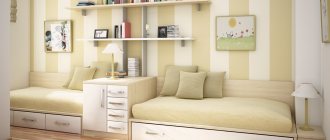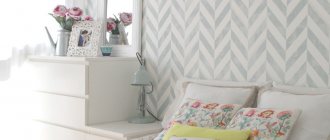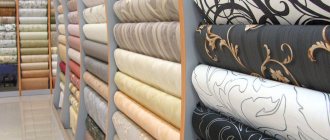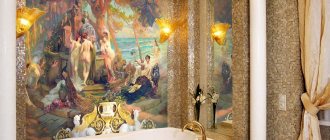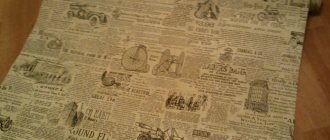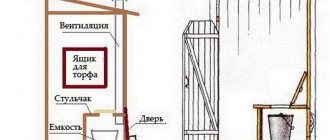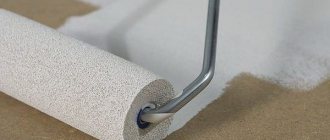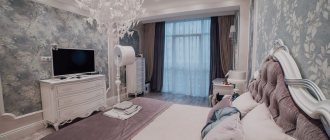Many people who own country houses or just summer cottages are seriously tormented by the question - what will happen to the house, its decoration, as well as all the installed furniture, if the house is not heated throughout the cold season? This raises another question - what is better for the house: to leave it unheated for the whole winter or to come there from time to time and heat the living quarters? This issue needs to be addressed. So, what will happen to your dacha if you leave the house without heating in winter.
Different parts of the house and furniture may react very differently to such a test. First of all, because different materials used in finishing, repair, and furniture manufacturing react differently to such tests.
How to decorate a balcony without insulation?
Materials for finishing balconies
- Plastic panels - this option can be considered the cheapest. ...
- Lining is simply a board of wood that has an appropriate profile. ...
- MDF panels are another worthy material with which you can easily decorate a balcony.
Interesting materials:
What categories of convicts are assigned by the court to serve their sentence in a general regime penal colony? What glue should I use to glue glitter? What glue should I use to glue PVC film? What kind of glue can I use to glue false nails? What peace treaty ended the Russian-Turkish war of 1877-1878? What can be the relative position of a straight line and a circle of two circles? How is the UN Security Council formed? How do clouds disperse? How does the Sun heat the Earth's surface? How does temperature affect seed germination?
Advantages and disadvantages
Of course, any job has its pros and cons. And our case is no exception. Let's take a closer look at both the positive and negative aspects of this approach.
The advantages include such a factor as the absence of significant daily temperature changes, as well as drafts inside the apartment, since all windows, as a rule, are closed, and the temperature, thanks to heating, remains at approximately the same level. All this affects the fact that the likelihood of a better quality repair result increases significantly.
At the same time, you need to understand that certain problems can be created by the fact that the air humidity may be somewhat excessive. At the same time, constant heating, especially in cases where the room is really warm in winter, can, to a certain extent, eliminate this disadvantage.
Remember! In any case, in order to thoroughly dry the work surface, which, in turn, resists the appearance and spread of fungus and mold, it is enough to use a special construction hair dryer.
Be that as it may, the only significant disadvantage of winter wallpapering is that in such cases the wallpaper often dries unevenly on different parts of the walls. This happens because in places that are located close to heating radiators, the temperature is always higher than the average in the room. As a rule, you can deal with such a problem by using PVA glue, which is familiar to us all. This adhesive composition is very affordable, and its main advantage in our case is that it is much less susceptible to temperature changes.
Analogs of wallpaper for a country house
The most common and exciting way to move away from ordinary wallpaper and create your own special interior is to decorate the walls in patchwork .
«Patchwork or patchwork, as it is sometimes called, came to us from England in the 18th century, where at that time there was a fashion for bright Indian fabrics. This style can be applied in everything, including interior design. All you need to do is create your own canvases from scraps of wallpaper using the mosaic principle. Depending on what colors, textures and patterns you choose, the walls can turn out either screamingly bright or fascinatingly wonderful.
You can go ahead and not use wallpaper at all to create collages. Surely, you will find old newspapers at your dacha. You can use them by gluing them in a random order and covering them with colorless varnish. Such a wall will be easy to maintain and will not care about any adversity, since burnt-out areas or cracked surfaces will only add “zest” to your creation.
MOST READ FROM PARTNERS
You can get creative and paste on sheets from old textbooks or use pretty sheets of wrapping paper. And someone may have unused geographical maps lying around.
Involve children in your creativity and you will be amazed how willingly they will help you with repairs!
All in your hands. The main thing is to have imagination and a strong desire to turn your country house into a cozy family home.
How to care for wallpaper in your home? Recommendations
Wallpaper in the house is always a consumable item. You won’t be able to stick it on and forget it, especially if you have children and pets in the house. Therefore, they need proper care.
What to do if the wallpaper in your house becomes dirty? First of all, of course, you need to find out what cleaning options are provided for them. Most often, such information is indicated on the label, as well as cleaning recommendations. However, it should be borne in mind that not all brands and types of wallpaper are able to maintain their brightness and original appearance after several years.
Many homeowners consider vinyl wallpaper to be the most practical in terms of maintenance. In order to keep them clean, you just need to wipe them occasionally with a damp sponge, even without detergent. Then you need to wipe them again, but with a dry cloth.
Sounds simple enough, although there are some nuances. The sponge should not be too hard or too wet (that is, water will run off). Also, do not rub the wallpaper too hard. Otherwise, either the wallpaper pattern will be damaged, or the sheet will be deformed, or both. You should be especially careful with a relief pattern.
Paper type wallpaper cannot be washed or wet, you can only vacuum it. It is better to attach the softest brush that comes with it to the vacuum cleaner. There are also special products for cleaning non-washable wallpaper - today they are not difficult to find in any household store.
The above describes how to care for clean wallpaper, but sometimes you have to deal with other troubles, such as grease stains, crayons, fingerprints, and even felt-tip pens. For each such case there is a separate way to deal with it, and here are just a few of them:
However, even if you have already decided what to do, there is still no need to rush. Each manufacturer uses a different “recipe”, and therefore each type of wallpaper reacts differently to cleaning.
Therefore, in any case, before cleaning a large area, it is best to conduct a “test” of one method or another in a secluded corner, check the reaction of the wallpaper to the cleaning agent, temperature, and humidity. Another option is to cut a small piece from the roll and carry out one or another operation. If there is no extra wallpaper, the only option is to test it in a place where it will not be noticeable, for example, behind furniture.
Don't forget to add the Nedvio website to your Bookmarks. We talk about construction, renovation, and country real estate in an interesting, useful and understandable way.
Source
Calculating the number of rolls of wallpaper for a country house
Even if you are carrying out cosmetic renovations in a country house, wallpaper can radically change the look of the room, and a global renovation is generally pointless without re-pasting the wallpaper. Therefore, when country houses are built from logs, you should immediately carefully consider the design and type of wallpaper that will serve you for many years. In such a simple matter, it would seem, there are a lot of subtleties and nuances, let’s try to understand them.
An important point in preliminary preparation for wallpapering a room is calculating the number of rolls of wallpaper. So, you have chosen the wallpaper option according to your taste and price, now you need to measure the length, width and height of the room. Let's calculate the perimeter of the room using the formula - two lengths plus two widths. Then we look at the parameters of the wallpaper roll, we need the width. Divide the size of the perimeter by the width of the wallpaper sheet, round this number up to a whole number, leaving a small margin. We add ten centimeters to the height of the room for leveling, multiply the number of rolls that turn out higher by the height of the room, and we get the length of the required amount of wallpaper. All that remains is to divide this value by the length of the wallpaper roll and round to the nearest whole number. That's all, this number of wallpaper rolls is needed for wallpapering a room. If you need a very precise value, although this is already superfluous, with any pasting you always need a reserve, you can subtract the area of windows and doors. Please note that you need to buy more wallpaper with a pattern that needs adjustment.
The next important point is purchasing wallpaper glue. For different types of wallpaper, non-woven, vinyl, glass wallpaper, paper, cork, bamboo, a different type of glue is required. The easiest way is to buy glue recommended by the wallpaper manufacturer.
Don’t buy glue that is too cheap; it doesn’t stick well, leaves streaks, doesn’t dry, and contains mostly modified starch. The most expensive and best glue is based on methylcellulose, which glues very well, you need to apply a thin layer, it sets well and quickly. The glue also contains a small amount of PVA, the pH of the glue should be six, seven, no more and no less, dilute the glue in proportions strictly according to the instructions, it should be neither thick nor liquid, of excellent working consistency.
These simple points, which are not essentially those, are very important and will allow you to successfully carry out further wallpapering of walls.
ACTUAL NEWS
MOST READ FROM PARTNERS
MOST READ FROM PARTNERS
You may also find the following materials useful:
- Plastic containers to help the housewife
- How to build a fireplace with your own hands
- What you can do with your own hands for your home and garden: the most interesting ideas
- Ideas for arranging a summer shower in the country
- Natural flooring: which one to choose?
Paintable wallpaper is the optimal solution for a country house
Most often, paintable wallpaper is used in the decoration of cottages. This is due to the fact that they can serve for decades, and if the owner gets tired of them, the room can always be easily repainted in the desired color.
All wallpapers for painting are divided into the following types:
We will briefly look at the features of each of them, although we will dwell on non-woven and vinyl wallpapers in more detail, since they are in greatest demand among homeowners today.
Non-woven wallpaper
Non-woven wallpaper perfectly masks possible defects on wall surfaces and, moreover, is very durable.
As a rule, they consist of two layers. There is a non-woven base, which is a fabric made of synthetic fibers and cellulose, which is covered with a layer of polyvinyl during production.
To paint such wallpaper, ordinary water-dispersion paint is used. The advantage of such wallpaper is that it can be repainted many times.
How to hang non-woven wallpaper?
If you want to renovate the rooms of the house, non-woven wallpaper can simply be removed, without the usual pre-wetting.
Useful tips
When thinking about what wallpapers are on the market and which ones to choose for your home, don’t forget about the obvious things and use little tricks that will help correct some of the room’s shortcomings.
Buy expensive things. A country house is not that big - you can “splurge” on a couple of rolls of expensive wallpaper. The more expensive the coatings, the more durable they will be. Choose several rolls of very good wallpaper, and you can save money, for example, by shopping on sales days in large stores.
Combine. Country premises are most often small. It is not necessary to completely cover all the walls with wallpaper: you can afford a combination with plaster, wood, and brick.
- 1 of 1
On the picture:
Let you stick just a couple of rolls of expensive wallpaper on the wall. But they will become the decor of a country house, and not the filling of an empty wall.
Don't skimp on glue. It doesn’t matter whether you buy cheap or expensive wallpaper, you must choose the right adhesive. Moreover, it is better to buy wallpaper and glue at the same time.
Buy neutral ones. White, salt and pepper, small drawings, abstract patterns in pastel colors are ideal. This wallpaper is not afraid of fading in the sun. In addition, light colors visually expand the space.
Adjust the space. How to choose wallpaper for a low room? – The advice is simple: buy striped ones. The vertical strip raises the ceilings. Moreover, the larger the area of the room, the wider the strip you can afford: a large strip in a room is 8 square meters. m inappropriate!
- 1 of 3
Rules for successful pasting
To understand at what temperature to glue non-woven wallpaper, you should pay attention to the following advice from experts:
- the air temperature in the room should be from 10 to 25 degrees C. In this temperature range, the adhesive base of the canvas dries evenly. It is important that the optimal climate is maintained for 10 days after gluing;
- The humidity in the apartment should not exceed 60%. Otherwise, the properties of the adhesive composition will deteriorate. As a result of non-compliance with humidity conditions, air bubbles and places where the canvas comes off may appear on the walls. In such situations, it is necessary to pre-dry the air;
- there should be no drafts. Even the slightest breeze negatively affects the progress of work. Due to a draft in the room, the temperature and humidity of the air changes, which affects the quality of the glue and the drying process. The consequence of failure to comply with this condition may be partial peeling of the wallpaper. If there are no drafts, the trellises can be glued at any time;
- The glued sheets should be protected from direct sunlight. If this is not done, the wallpaper will quickly dry out in places, which leads to its wrinkling and sagging.
All these rules can be easily followed if repairs are carried out in a residential building. It is enough to pay attention to the humidity level, close all the windows and cover the windows with fabric. If the temperature constantly changes, the wallpaper will come off in different places. Only after the preparatory work has been completed can you safely begin wallpapering.
What types of wallpaper are there, and how suitable are they for use in the country? We list only those varieties that make sense to use in an unheated house.
- Paper wallpaper. They are attractive because they are cheap, but gluing them is quite difficult: the surface must be well leveled, and the technology of impregnating cut strips with glue requires two pairs of hands and a certain skill. If the house has just been built (there are no problems with cavities on the plaster), and you are not afraid of the difficulties when gluing, this is an ideal country covering. They are faded, dirty, peeling at the seams due to dampness - we mercilessly tear off the stripes and re-glue the room before the new season. If you want to save effort and time, choose duplex wallpaper over simplex (single-layer paper). They do not fade longer and are more moisture resistant than single-layer ones.
Examples of interesting collections of paper-based wallpapers.
- Vinyl wallpapers . Ideal country wallpaper: vinyl for painting. They are easy to wash and clean, which is quite important at the dacha, when household members or a pet, unwittingly, due to the proximity of the garden, can stain the wallpaper with earth or grass. Such wallpaper can be painted many times. Vinyl-coated wallpapers are not afraid of direct sunlight.
What wallpaper should you choose for a country house?
You should immediately take into account that if you do not want to spend a large amount on wallpaper for your dacha, then you should not choose paper wallpaper. They are certainly cheaper, but in the end, you are guaranteed repairs for the next season. If the paper ones “last” the winter, they will definitely fade from the sun’s rays.
Vinyl wallpaper is denser and better suited for a country house. You can also choose different textures and patterns. If you prefer an abstract pattern or small flowers, then there will be less waste and greater savings. They wash well and will not cause you any trouble, since they do not require special care.
But decorating a house outside the city can inspire any housewife to use her imagination and turn this seemingly routine activity into an exciting event. How can you make the interior of a country house unique and original?
Glass wallpaper
Fiberglass wallpaper is wear-resistant and quite durable. They can withstand thorough cleaning with detergents. It’s true that they cost an order of magnitude more than all of the above types.
As a rule, they are included by designers in the interior planning of cottage projects where expensive, luxury European-quality renovations are planned.
A special feature of glass wallpaper is that after gluing is completed, they must be painted with water-based or latex paints. This type of wallpaper can also be repainted twice without losing the relief.


